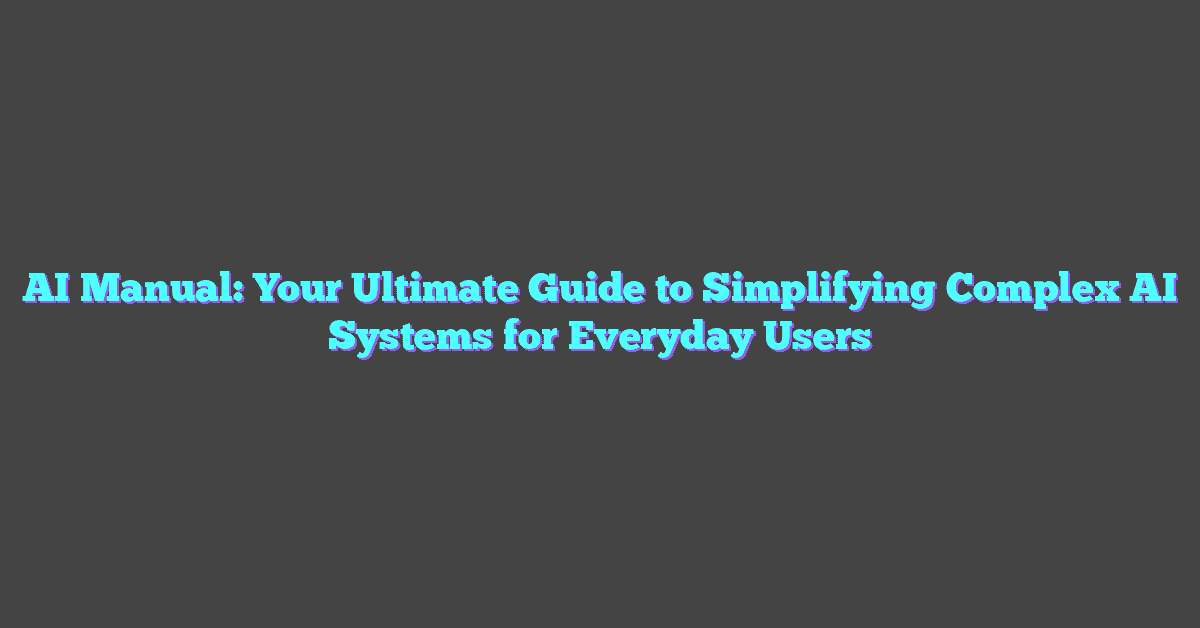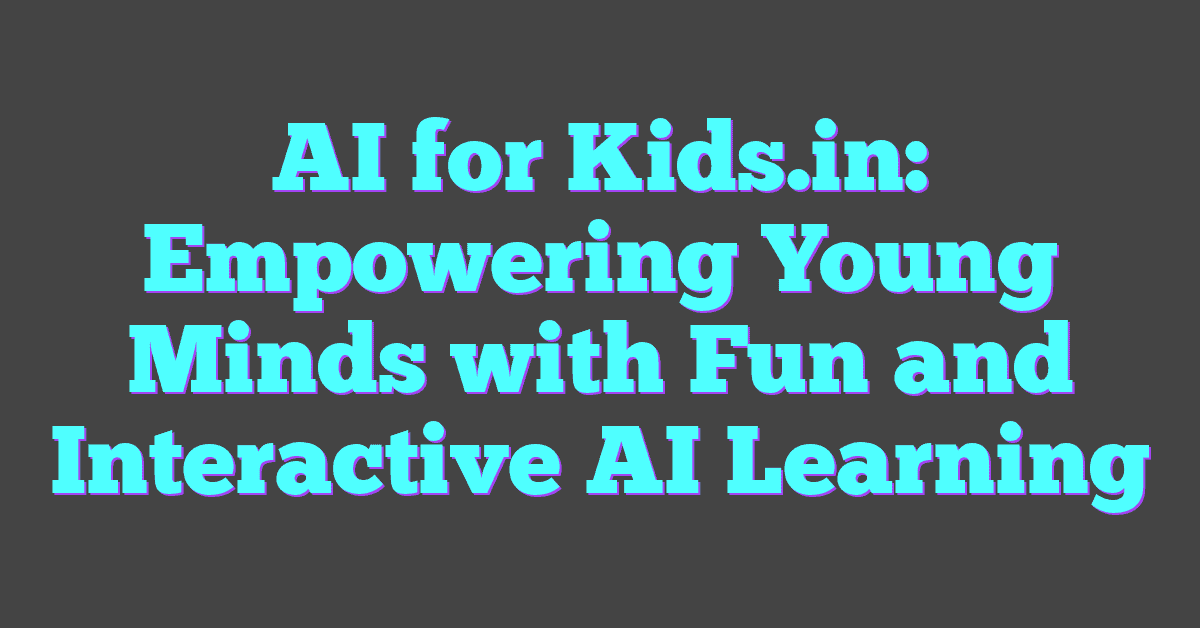Artificial Intelligence (AI) is no longer a concept confined to sci-fi movies; it’s now an integral part of everyday life. From virtual assistants like Siri and Alexa to recommendation algorithms on Netflix and Amazon, AI is everywhere. But what exactly is AI, and how can one harness its power effectively?
An AI manual serves as a comprehensive guide to understanding and implementing AI technologies. Whether you’re a curious beginner or a seasoned tech enthusiast, this manual breaks down complex concepts into digestible, actionable steps. Dive in to discover how AI can transform not just industries, but daily routines and personal projects too.
Understanding AI Manuals
AI manuals make understanding Artificial Intelligence more accessible. They break down complex concepts into simpler terms for both beginners and tech enthusiasts.

Key Components of AI Manuals
AI manuals typically include several vital elements:
- Basic Concepts: Introduce fundamental ideas like algorithms, neural networks, and machine learning.
- Technical Details: Provide in-depth explanations of key technologies, including supervised and unsupervised learning.
- Step-by-Step Guides: Offer practical instructions for setting up AI tools and frameworks such as TensorFlow and PyTorch.
- Examples and Use Cases: Present real-world applications to illustrate how AI solutions are employed in different industries.
- Glossaries: Contain definitions of specialized terms, ensuring readers are familiar with industry jargon.
How AI Manuals Differ From Traditional Manuals
AI manuals diverge from traditional ones in a few distinct ways:
- Interactivity: Often incorporate interactive elements like code snippets and simulations to enhance learning.
- Visual Aids: Use diagrams and flowcharts extensively to visualize complex processes.
- Up-to-date Content: Frequently updated to reflect the fast-evolving nature of AI technologies.
- Customizability: Allow users to tailor the learning experience based on their skill levels and interests.
These differences make AI manuals not just instructional tools but comprehensive resources for anyone looking to delve into artificial intelligence.
Importance of AI Manuals in Technology Adoption
AI manuals play a vital role in technology adoption, bridging the gap between complex AI systems and everyday users. They offer structured guidance, enabling individuals to leverage AI tools effectively.
Bridging the Gap Between Technology and Users
AI manuals demystify advanced AI concepts by translating technical jargon into user-friendly language. They offer clear explanations of AI principles, algorithms, and workflows. For instance, manuals often explain terms like “neural networks” or “machine learning models” in simple terms, ensuring users grasp the fundamentals.
Clear diagrams, visual aids, and real-world examples enhance understanding. These elements break down intricate ideas into digestible parts, helping users see practical applications. For example, a diagram might show how AI analyzes data patterns to make predictions, simplifying the concept.
Enhancing Effective Use of AI Tools
AI manuals provide step-by-step instructions for deploying and utilizing AI tools. This hands-on approach ensures users can implement AI solutions confidently. Detailed guides often cover installation, configuration, and troubleshooting, covering the entire user journey.
Interactive elements like tutorials and video demonstrations further enrich the learning experience. Users can follow along, applying knowledge directly to projects. For instance, a tutorial might walk users through setting up a chatbot, offering interactive support at each stage.
Regular updates in AI manuals keep users informed on the latest advancements. As AI evolves, these manuals adapt, incorporating new features and best practices. This ensures users stay current, maximizing the benefits of their AI investments.
Challenges Associated with AI Manuals
AI manuals play a crucial role in bridging the gap between complex AI systems and users. However, several challenges are associated with creating effective AI manuals.
Addressing Complexity in AI Technology
AI technology involves intricate algorithms and numerous variables. Manuals must simplify these complexities without losing essential details. Writers often struggle to balance technical accuracy with user comprehension, especially when explaining advanced topics like deep learning or natural language processing. Manuals need to offer clear, step-by-step instructions for various user levels, from beginners to experienced practitioners. Visual aids such as detailed diagrams and flowcharts can break down the AI processes into understandable segments.
Overcoming the Terminology Barrier
AI terminology can be daunting, even for those with a tech background. Manuals should demystify this language by providing clear definitions and context for terms like “neural networks,” “regression models,” and “gradient descent.” Glossaries and tooltips can be particularly helpful. Including everyday analogies or simplified examples helps bridge the understanding gap. Ensuring that readers grasp these terms is vital for their confidence and capability to use AI tools effectively.
Best Practices for Creating Effective AI Manuals
Creating effective AI manuals bridges the gap between complex technology and everyday users. These documents must balance technical detail with user comprehension.
Simplicity and Clarity
Effective AI manuals prioritize simplicity and clarity. They avoid jargon whenever possible and clearly define necessary technical terms. Manuals should use straightforward language to explain complex algorithms and processes. Visual aids such as diagrams and flowcharts can simplify explanations further. For example, illustrating an AI workflow with a simple flowchart helps users grasp the process quickly.
User-Centered Design
User-centered design ensures the manual meets users’ needs. This approach involves understanding users’ skill levels and tailoring content accordingly. For beginners, the manual might include basic AI concepts with step-by-step instructions, while advanced users might benefit from detailed explanations of algorithms. Including interactive elements like tutorials and video demos enhances user engagement. Regular updates informed by user feedback keep the manual relevant and effective.
Effective AI manuals, focusing on simplicity, clarity, and user-centered design, are essential tools for technology adoption. Emphasizing these best practices ensures that AI remains accessible and comprehensible to all users.
Conclusion
AI manuals play a crucial role in making advanced technology accessible to everyone. By focusing on simplicity and clarity, they help users understand and utilize AI tools effectively. Incorporating visual aids and interactive elements makes these manuals even more user-friendly. Regular updates and user feedback ensure that the content remains relevant and helpful. With well-crafted AI manuals, anyone can navigate the complexities of AI and harness its potential to improve their daily lives.
Frequently Asked Questions
What is the importance of AI manuals?
AI manuals simplify complex AI systems, making them accessible to everyday users. They offer clear explanations and step-by-step instructions, helping users deploy AI tools effectively.
How do AI manuals bridge the gap between technology and users?
AI manuals bridge the gap by breaking down advanced AI concepts into understandable language, avoiding jargon, and providing visual aids. This helps users grasp the technology and utilize it efficiently.
What are best practices for creating effective AI manuals?
Effective AI manuals focus on simplicity, clarity, and user-centered design. They avoid technical jargon, use visual aids, and tailor content to the users’ skill levels to enhance understanding.
Why is avoiding jargon important in AI manuals?
Avoiding jargon is crucial because it ensures that the information is accessible to all users, regardless of their technical background. This helps in better comprehension and broader adoption of the technology.
How can visual aids improve AI manuals?
Visual aids like diagrams and charts can make complex information easier to understand. They help illustrate processes and concepts, making the manuals more user-friendly and engaging.
Why should AI manuals be tailored to users’ skill levels?
Tailoring AI manuals to users’ skill levels ensures that the content is relevant and accessible. Whether the user is a beginner or an expert, the manual should provide useful information that meets their specific needs.
What is the benefit of incorporating interactive elements in AI manuals?
Interactive elements, such as quizzes or simulations, engage users and enhance learning retention. They provide practical experience, making the adoption of AI tools smoother and more effective.
How can regular updates improve AI manuals?
Regular updates ensure that AI manuals remain relevant and accurate, reflecting the latest advancements and user feedback. This keeps users informed and helps them effectively utilize the AI tools.
How does user feedback enhance the effectiveness of AI manuals?
Incorporating user feedback helps identify areas for improvement in AI manuals. By addressing users’ concerns and suggestions, manuals can become more comprehensive and user-friendly, ensuring better technology adoption.
What role do AI manuals play in technology adoption?
AI manuals play a crucial role in technology adoption by simplifying complex systems and making them accessible. They ensure users understand how to use AI tools effectively, encouraging broader and more successful implementation.




